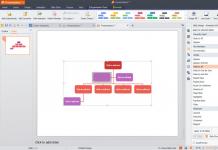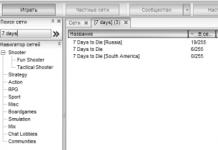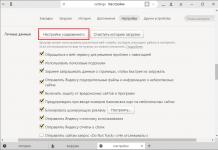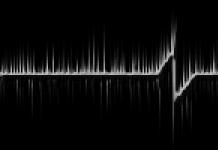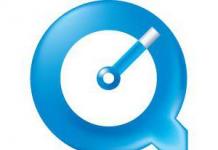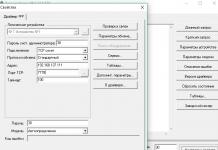The proprietary electronic library iBooks, developed by Apple specifically for the iPhone, iPad or iPod Touch, is not adapted to the readership needs of residents of Russia and the CIS. Fiction, journalistic and scientific literature presented on the virtual shelves of iBooks, as a rule, are not translated into other languages (only English or “American”, an even more unusual option, and rarely perceived even in Europe, and there is no search for Russian at all). sense), is inconveniently formatted, and also suffers from a bunch of shortcomings - such as a limited number of authors and a long response to already published works.
But the main disadvantage is, perhaps, the price - Apple developers offer to pay fabulous sums (and even in dollars) for outdated literature that has not attracted attention for a long time. And, if you want to save money, you will have to be content with rare free books, which are also out of fashion.
And finally, it’s inconvenient to add other files to iBooks - the procedure is too confusing and not intuitive. Hence the conclusion - Apple’s tool should be put aside and, finally, focus on the main thing: the ability to read for free on the iPhone or iPad, which you need at the moment.
You will have to figure out your goal with the help of third-party readers, which can be easily downloaded from the App Store (it is pointless to list each option - the list will stretch to thousands of positions, but if recommended, then it is a good option for those who are just starting to understand electronic literature).
Step-by-step instruction
- Preparation. First of all, you will have to look directly at the digital App Store and, using the search, find a suitable e-reader - for example, iBouquiniste. Click “Download” and wait for the installation to complete;
- Using iTunes. If your personal computer has long had an impressive collection of works by different authors, which you don’t want to lose under any circumstances, then you should immediately turn to iTunes by first connecting your iPhone, iPad or iPod Touch to the computer using a USB cable;
- Next – a standard transition to setting up the device using the button located in the upper left corner;
- After the transition – select the “Shared Files” menu item on the left side of the interface;
- And, among the variety of programs offered, choose iBouquiniste. The list on the right will immediately display the current set of files already added to the reader. If you wish, here you can study the already generated library for protection against duplicates. But it is important to understand that you cannot part with unnecessary information through iTunes - you will have to use either the built-in iOS tools or download assistants from the App Store;
- The last step is to scroll through the menu and find the “Add File” button, and then begin to select those books that need to be downloaded. iBouquiniste easily copes with the FB2 extension, knows ePub, and digests DOC and PDF. There will definitely be no problems with reading. After adding files through the menu, you can safely unfasten your smartphone, tablet or player from the computer and start reading;
- Third party sources. If iTunes is far away, no library has been assembled in advance, or the USB cable is lost in the depths of an unassembled backpack, then there are alternative methods for adding books to Apple equipment;
- The browser can easily help you with the task of breaking your literary fast. The main thing is to find the right source with an easy search or download that allows you to bypass any additional checks or advertising. And, if you have to choose, then Flibusta will definitely not leave anyone indifferent;
- The first step is to open the main page of the service online. The second is to go to the search located in the upper right corner. Next, view the results and proceed to download through the links located at the top of the page. FB2, ePub, MOBI – there will definitely be suitable options;
- After clicking on the link, the browser will automatically offer to transfer the information directly to iBouquiniste. The procedure will take exactly 5 minutes!
It’s even more convenient to interact with the Flibusta bot for Telegram. The idea is the same - a message is sent to the bot, which provides a download link in the required format - but the search speed is much higher, and you don’t have to run the browser again.
Do you love to read as much as I do?! I try to read in any free time. And I do this mainly on a smartphone or tablet. There are usually no problems with Android, but with Apple gadgets it’s a little more complicated. There are two main ways to download a book to an iPhone - directly from the Internet, or from a computer using iTunes. Personally, I use the first option, because, frankly, I don’t like doing anything through iTunes from a computer. And you are looking at which way to download a book to iPhone will be more convenient and easier for you personally.
Download a book to iPhone directly from the Internet
Your smartphone must be connected to the Internet via mobile or WiFi. Open the Safari web browser (or any other browser you use).
We open the site where we found the book or magazine we need for free and download it in ePub format. Unfortunately, this method only works with this format for now. If there is no button or link on the page that allows you to download a book for free on your iPhone in ePub format, you will have to search on other sites.
Once the file is completely on your phone, select the “Open in iBooks” option.
After this, the book will open in this application and you can fully enjoy reading it!
How to transfer a book to iPhone from computer
In order to transfer the book you need from your computer to your iPhone via iTunes, you will first need to update to the latest version. However, it is worth mentioning that after version 12.7.5 it is very inconvenient to load books specifically into iBooks. The developers have done something really clever. Therefore, for this method it is better to use the program KyBook.
So, open iTunes on your computer. Log in to your personal account (you will need to enter your Apple ID and password).
Next, you need to connect your iPhone to your computer via a cable and open the “Devices” tab in iTunes.
In the menu on the far left, find and select “Shared Files.”
Select the KyBook program from the list of applications (or any other program you like, except iBooks). The “KyBook Documents” field will appear on the right:
You need to transfer books into it with your mouse that need to be downloaded to your iPhone. Click the “Synchronize” button and wait for the process to complete. After this, the phone can be disconnected from the PC. The books you need will appear on your device in the program for which you synchronized the documents.
For owners of iPad tablet devices, this instruction will also be useful; the tablet has an even larger screen size, which is a little better for the eyes when reading.
Before we start transferring books to our iPhones and iPads, I’ll tell you a little about how we will download them later. We will read in the standard iBooks reader, which either disappears or reappears among the standard Apple iOS firmware programs. Look, if you don’t have an e-reader called iBooks among your applications, then install it using our instructions:
To start our downloading of books using the method we are considering today, we will need to have:
- Computer or laptop
- The computer must have
- And of course the cable from our iPhone (iPad)
During the instructions, we will perform two main actions: we will load our literature into the program and, after the book is added to iTunes, we will perform book synchronization.
In order to add a book to iTunes, we need to know the format of suitable books. About book formats for iPhones and iPads it is written here - “”. Since we need books for subsequent reading in the iBooks application, the format should be ePub. Such book files look something like this – Kniga.epub. PDF books are also compatible with the iBooks reader and can also be downloaded. But today we will look at the example of epub.
Where to find ePub books
An ordinary user will be able to find books in ePub format on the Internet, some authors give out books for free, some sell books in electronic formats (including ePub) in online stores, the price of which is significantly lower than the printed edition. The Internet is full of unlicensed books; everyone must decide for themselves whether to use them or not. If you are a writer, then you can make up books in ePub format yourself; this is done using special programs; if you don’t want to figure it out, then you can order an ePub book and they will make it up for you for money.
Adding a book to iTunes
If you already have an ePub book, you can download or, more accurately, add it to iTunes; this is done very simply.

Now I know where the book section is in iTunes
1. Launch the iTunes program (we are using version 12 as an example; if you have a different version of iTunes, the interface may look different). In the top panel of the program, click the button with three dots and select the section – Books.

2. The section for books in iTunes has been launched, now we add our book. The easiest way to do this is by dragging the ePub file into iTunes - grab our book with the mouse and drag it into the open Books section of the iTunes program.
If you can’t upload a file with your mouse, you can, while in any section of the iTunes program, click the menu – File, and select – Add file to library, select our ePub file and click the button – Open.

Books added to iTunes
Books have been successfully added to iTunes. If the book has a cover, it will be loaded into iTunes along with the book's title. Now we need to transfer the added books to the iPhone (or iPad), the transfer will be performed in the same iTunes program through synchronization.
Downloading a book to iPhone - synchronization

How to Download a Book on Apple iPhone - Step by Step Steps in iTunes
3. Now take the iPhone (iPad) and connect it to the computer using a USB cable. An iPhone icon will appear in the top bar of iTunes; click on it. After clicking, the left side menu appears, in it we select the “Books” section, check the “Synchronize Books” box and click the “Apply” button, which starts synchronizing our books. If you need to download not all the books in iTunes to your iPhone, but only some, then use the image above.

4. If the iPhone is synchronized with this iTunes program for the first time, a window will appear with a message similar to the following:
“iPhone is synced with another iTunes library on PC.” Want to delete iPhone content and sync it to your iTunes library?
iPhone can only sync with one iTunes library at a time. Erase and sync replaces the content on your iPhone with the content in your iTunes library.
I press the “Erase and Sync” button. iTunes transfers books to iBooks on iPhone. Once the sync session is complete, the books will be added to your iPhone and appear in the iBooks app. Before writing this instruction, I used another method of downloading books to iBooks - directly from the Internet, and for some reason I thought that after clicking the “Erase and Sync” button, the old books would be deleted, but they remained and even appeared in iTunes along with the new books.
For many users, the iPhone is replaced by a reader: thanks to its compactness and high image quality, reading books from the display of this device is very comfortable. But before you can begin immersing yourself in the world of literature, you must download the desired works to your phone.
You can add works to your Apple device in two ways: directly through the phone itself and using a computer. Let's consider both options in more detail.
Method 1: iPhone
Perhaps the easiest way to download e-books is using the iPhone itself. First of all, here you will need a reader application. Apple offers its own solution for this case - iBooks. The disadvantage of this application is that it only supports ePub and PDF formats.
However, the App Store has a large selection of third-party solutions that, firstly, support many popular formats (TXT, FB2, ePub, etc.), and secondly, have an expanded range of capabilities, for example, they can switch pages using keys volume, are synchronized with popular cloud services, unpack archives with books, etc.

When you have acquired an e-reader, you can proceed to downloading books. There are two options here: download works from the Internet or use the application to purchase and read literature.


Sometimes it’s much easier and faster to use special applications for searching, purchasing and reading books, of which there are many in the App Store today. For example, one of the most famous is LitRes. Using his example, we will consider the process of downloading books.


Method 2: iTunes
E-books downloaded to your computer can be transferred to your iPhone. Naturally, this will require the help of iTunes.
Option 1: iBooks
If you are using the standard Apple app to read, then the e-book format should be ePub or PDF.


The Apple iPhone, which has numerous functionality, is also suitable for those who just like to read. Some will question the comfort of this action, because a phone is not a tablet or an e-reader. But Retina displays allow on-screen reading without the risk of deteriorating visual acuity thanks to modern modifications.
The displays of the iPhone 6/7 Plus models are famous for their impressive size - 5.5 inches, or 13.97 cm. The new XS Max models are even larger in size. Enjoying reading your favorite works requires only the practical skills of the owner, who knows how to download a book to an iPhone and how to read it.
Before downloading, you need to know exactly the format of the text file and make sure whether the downloaded application for the “reader” corresponds to this format.
In this case, the main condition is the preliminary installation of the iBooks program on the iPhone, taken from the AppStore.
iBooks appPlease note that downloading iBooks is possible on iOS 10. The iBooks application has only two formats available: ePub and PDF. This undoubtedly reduced the former popularity of the “reader”. Alternatives have been developed, for example, KyBook, which “swallows” all formats.
Still, let’s look at an example based on the old familiar “smart book”. A regular browser is used. First, through a search engine, we find a site from which you can download the book you need (or we immediately go to the site from which we have previously downloaded files). The following steps are performed:
- Click on the link to download the book.
- “Open in the Books program” appears, click.
- The download process starts, the duration varies.
- The application will open with the file you just downloaded.


 After downloading, the book goes to the “Library”
After downloading, the book goes to the “Library” Transfer a book to iPhone via iTunes
Books are downloaded using iTunes. Electronic books should be stored on the computer, which we will transfer to the smartphone. The main conditions here are:
- Preliminary update of iTunes to the latest version.
- Login to your personal account after specifying your AppleID account information and password.

How to read books on iPhone
The iBooks app is quite convenient. Page turning occurs naturally from right to left.
 Flipping
Flipping If you quickly tap on the page 3 times, the settings menu will open:

Pressing the “aA” button opens a menu with settings where you can change the screen brightness, change the font, etc.

Additional Reading Apps
It remains to name the popular “reader” applications (except for the ones above) allowed for downloading from the AppStore:

Reading books using the listed and other (even third-party) applications is easy and comfortable. To do this, you just need to download and install the utility, upload works into it using iTunes, as indicated above.
Conclusion
An Apple smartphone provides all the possibilities for comfortable and eye-safe reading of literature. The iPhone owner himself chooses how to replenish his personal library.


